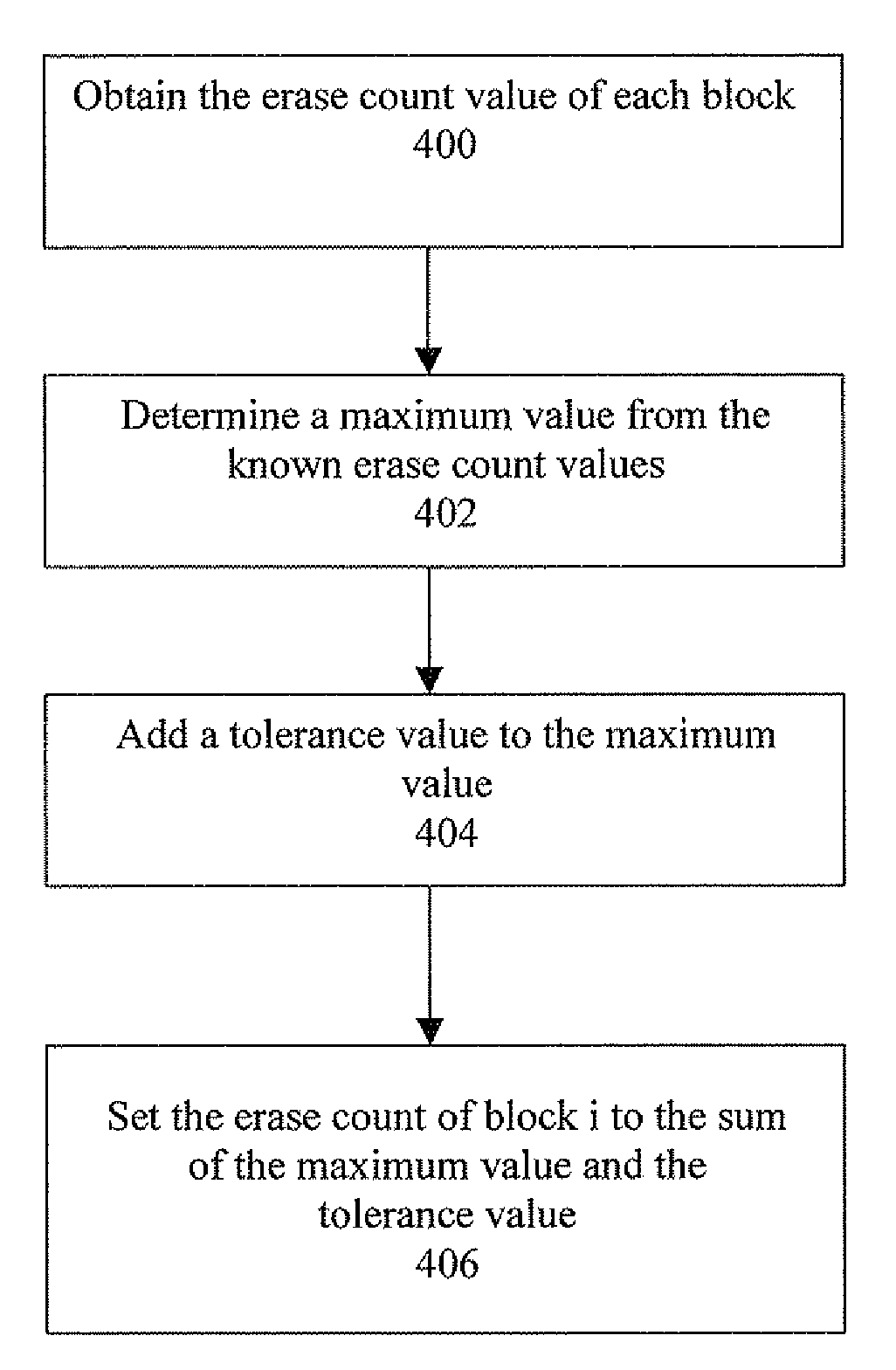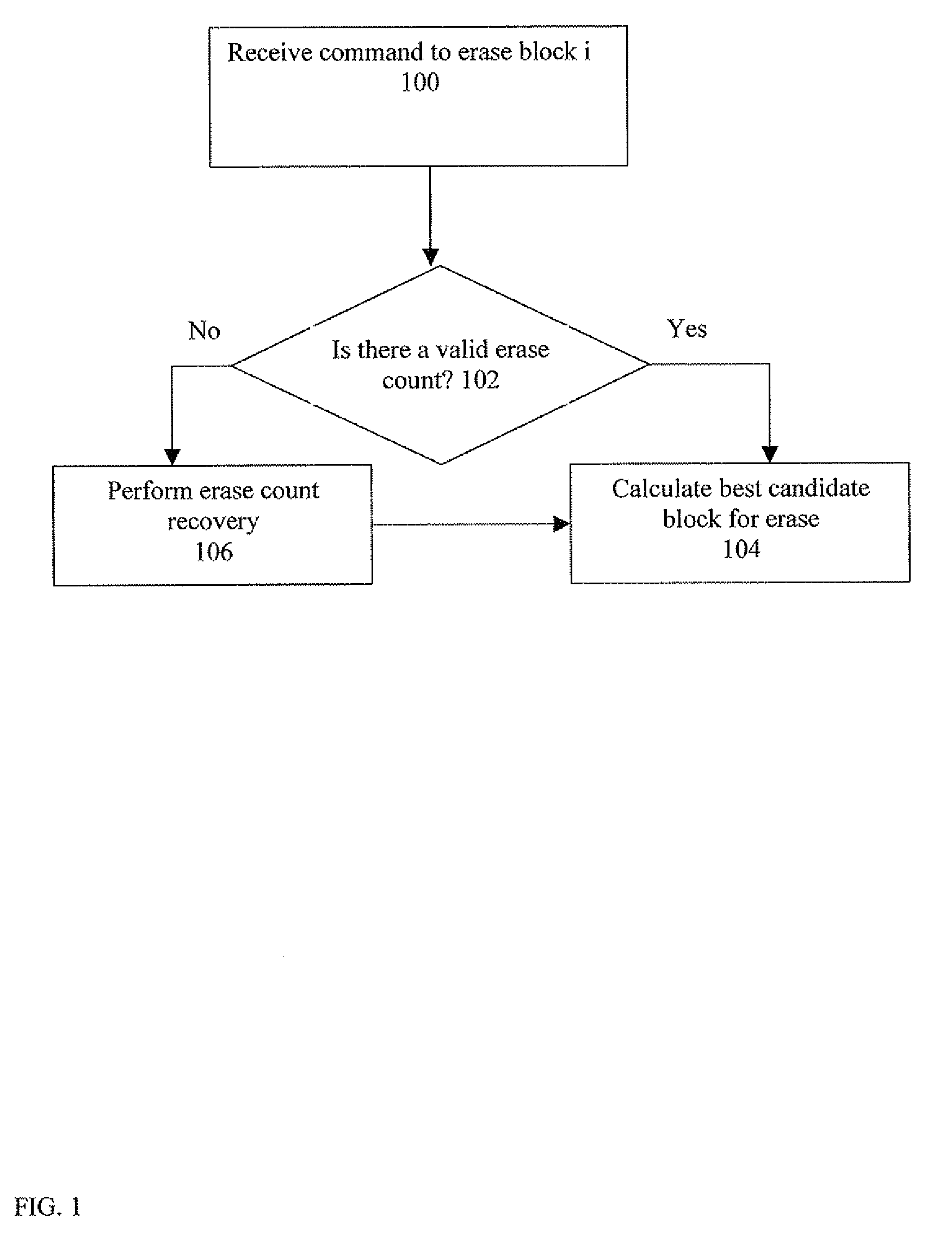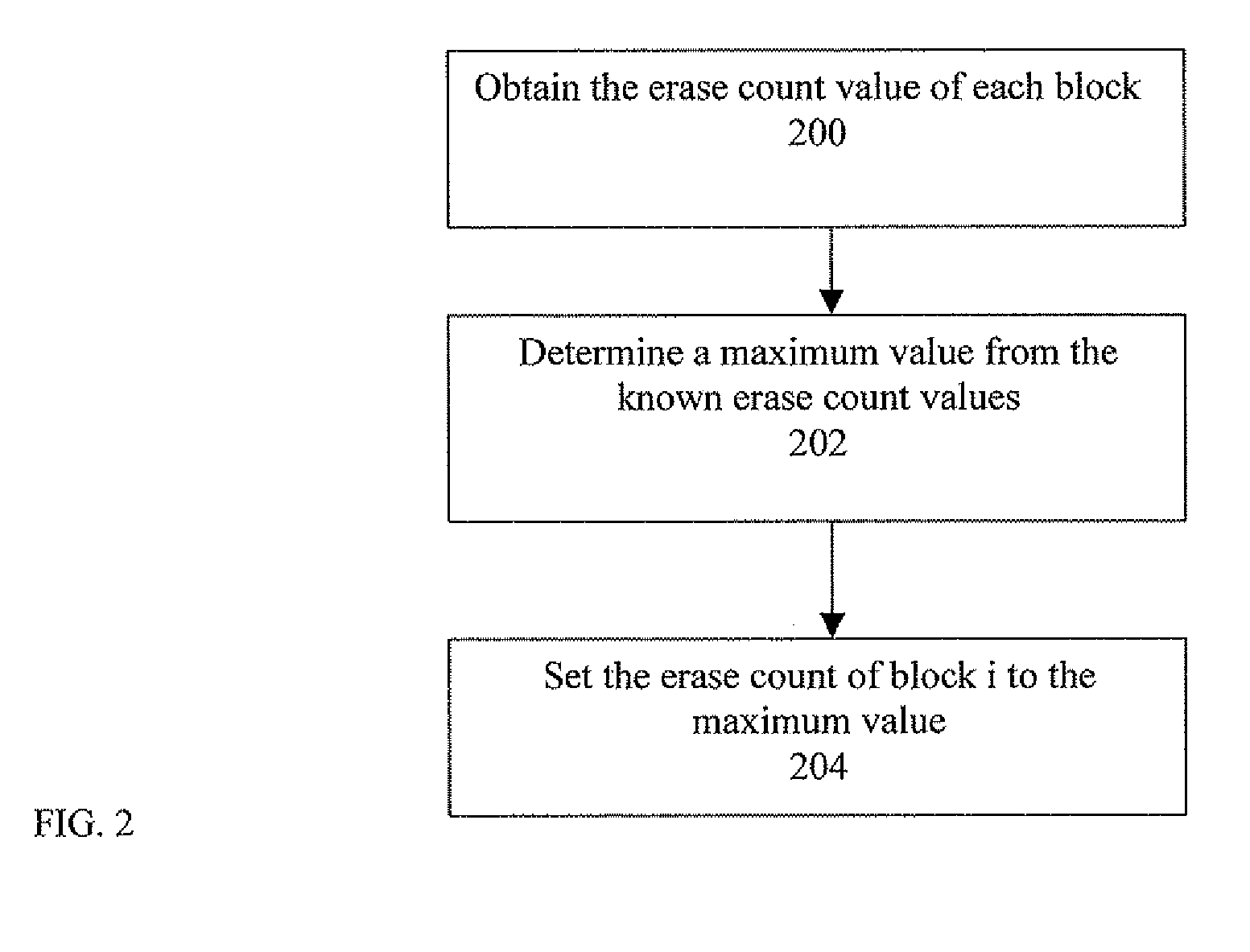Erase count recovery
a technology of erase count and recovery method, applied in the field of erase count recovery, can solve the problems of loss or invalidation of erase count, too many “bad” blocks, and find a mismatch
- Summary
- Abstract
- Description
- Claims
- Application Information
AI Technical Summary
Problems solved by technology
Method used
Image
Examples
Embodiment Construction
[0024]According to an example embodiment, a flash manager using a flash management algorithm obtains a new erase count for a block for which the erase count was lost, using known erase counts of other blocks of the flash memory, and assigns the new erase count to the block. In some embodiments, the flash management algorithm performs wear leveling (and is also referred to as a wear leveling algorithm) and the known erase counts may be obtained from wear leveling information. The flash management algorithm may be executed on the flash memory device processor / controller or on another device (which is not a flash device). The other device may be, e.g., a host side flash controller, a host side volatile memory (“VM”, exemplarily a RAM or DRAM) or a network server to which the flash device is operationally connected. The flash management algorithm typically uses a volatile memory to store an intermediate erase count. This volatile memory may but need not be located independently of the f...
PUM
 Login to View More
Login to View More Abstract
Description
Claims
Application Information
 Login to View More
Login to View More - R&D
- Intellectual Property
- Life Sciences
- Materials
- Tech Scout
- Unparalleled Data Quality
- Higher Quality Content
- 60% Fewer Hallucinations
Browse by: Latest US Patents, China's latest patents, Technical Efficacy Thesaurus, Application Domain, Technology Topic, Popular Technical Reports.
© 2025 PatSnap. All rights reserved.Legal|Privacy policy|Modern Slavery Act Transparency Statement|Sitemap|About US| Contact US: help@patsnap.com



